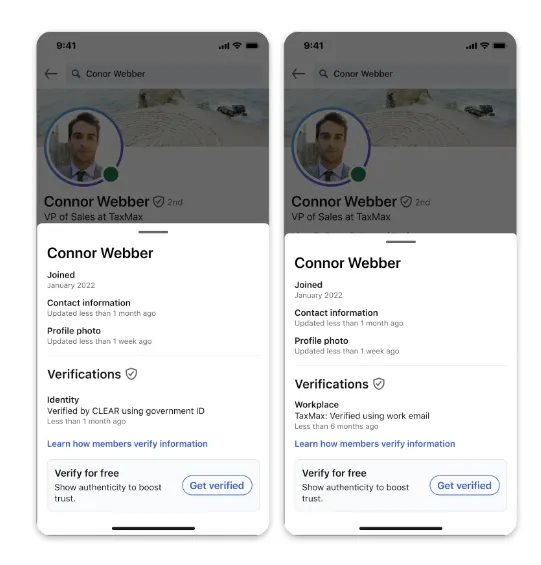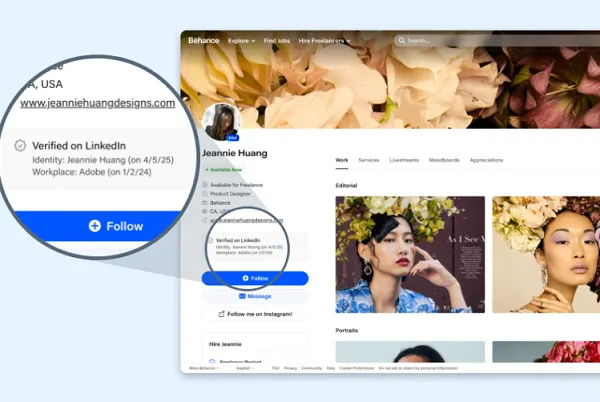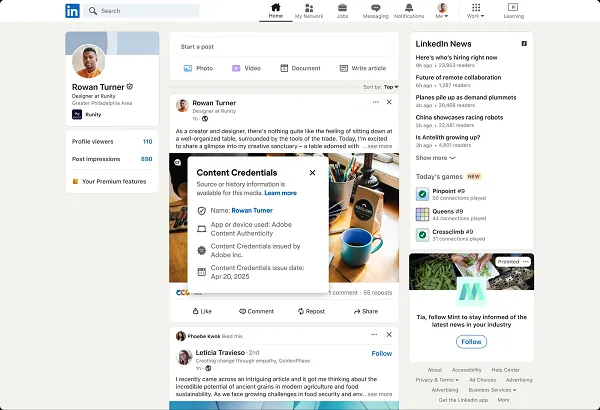LinkedIn Verification Now on Third-Party Platforms
LinkedIn is expanding its ID verification system to third-party platforms, starting with Adobe. This allows users verified on LinkedIn to display their verification badge on other sites.
Launched in 2023, LinkedIn's free ID verification uses third-party providers to confirm user identities. This gives users a verification tick within the LinkedIn app.

Unlike paid verification on other platforms, LinkedIn's system is available to all users, confirming their stated identity.
This expansion increases the value of LinkedIn verification and simplifies identity verification for partner platforms.

Adobe is integrating LinkedIn verification into its Content Authenticity app and Behance portfolio platform. Verified creators using Adobe's tools will also have their identity displayed alongside their work shared on LinkedIn.
Adobe is integrating LinkedIn verification into its new Content Authenticity app and existing Behance portfolio platform, allowing creators who’ve gone through LinkedIn’s verification to display a “Verified on LinkedIn” badge on their profiles. If verified creators use Adobe’s digital Content Credentials tools, their identity will also appear alongside their work whenever it’s shared on LinkedIn.
Over 80 million LinkedIn members have completed the voluntary ID confirmation process. This growing network of verified profiles helps link online identities to real people, combating spam, bot activity, and impersonation.
While universal verification on social media remains debated due to anonymity concerns, LinkedIn's approach offers an alternative. Its professional focus encourages users to verify their identities for building trust in business relationships.
This initiative demonstrates the feasibility of universal ID verification through third-party partnerships, potentially influencing future regulations for social media accounts.
Expanding Content Credentials Support
LinkedIn also plans to expand support for Adobe's "Content Credentials." This allows creators to embed ownership metadata into their content.

These combined efforts in ID verification and digital ownership enhance trust and security across the web, especially crucial in the age of increasingly sophisticated AI-generated fakes.






